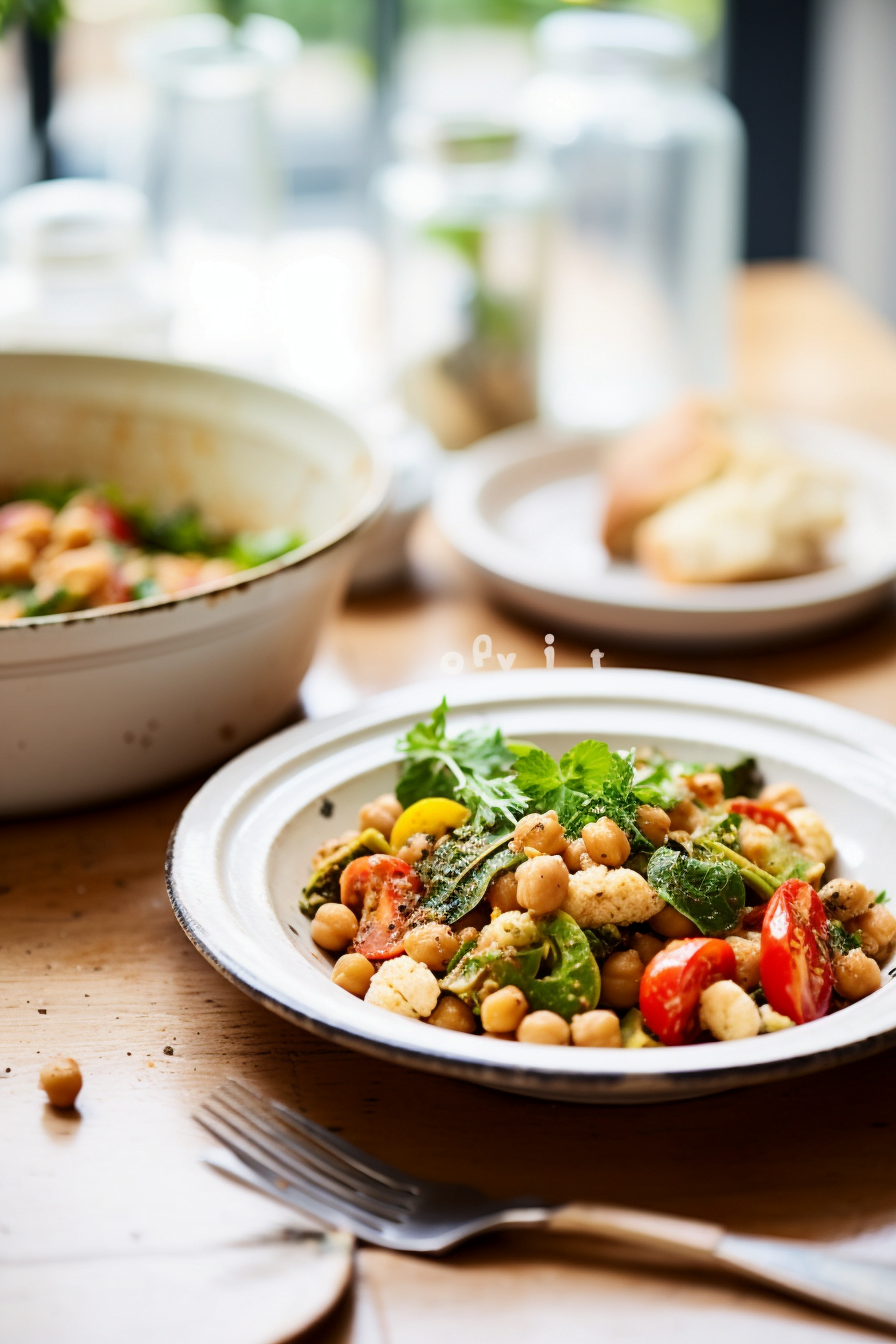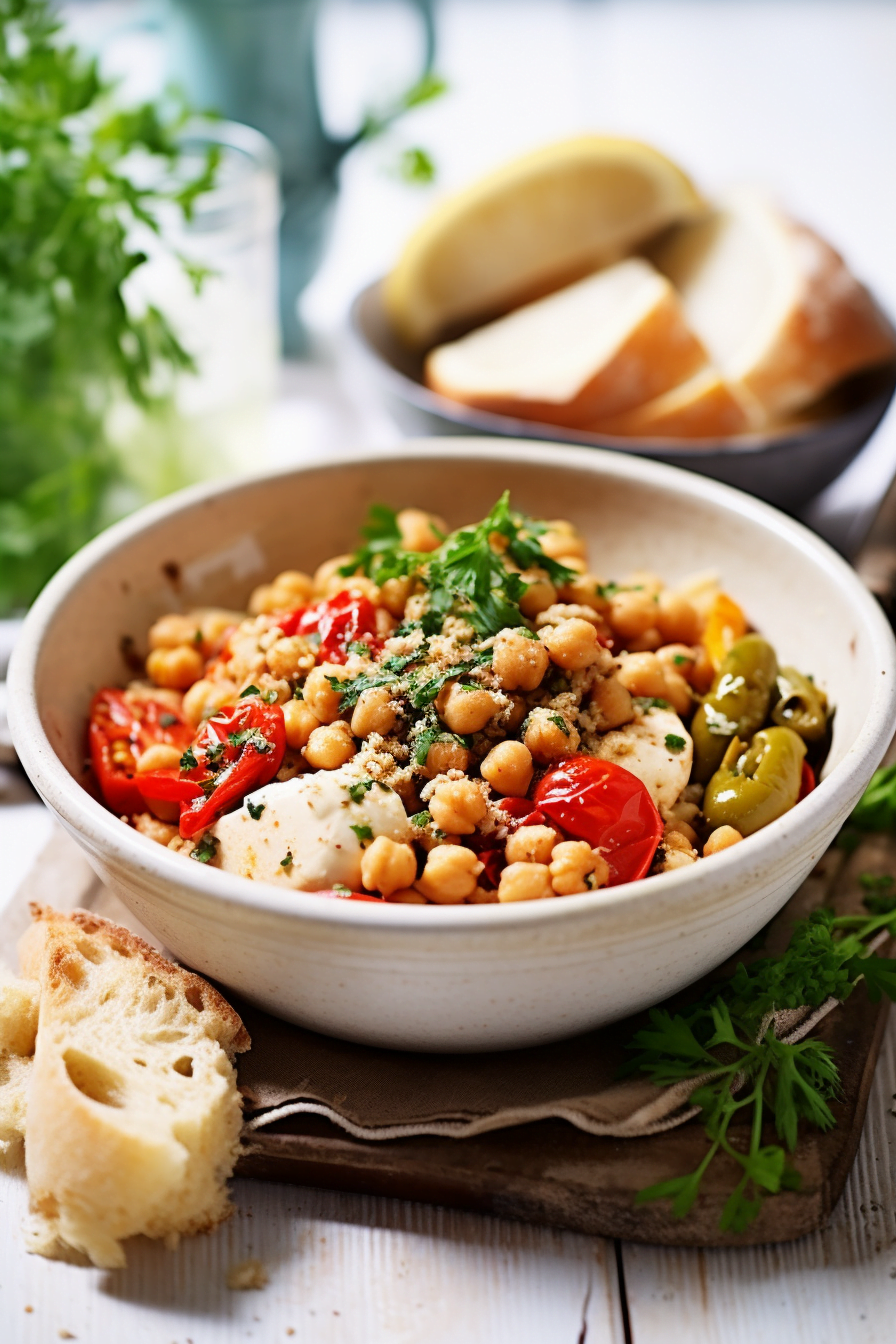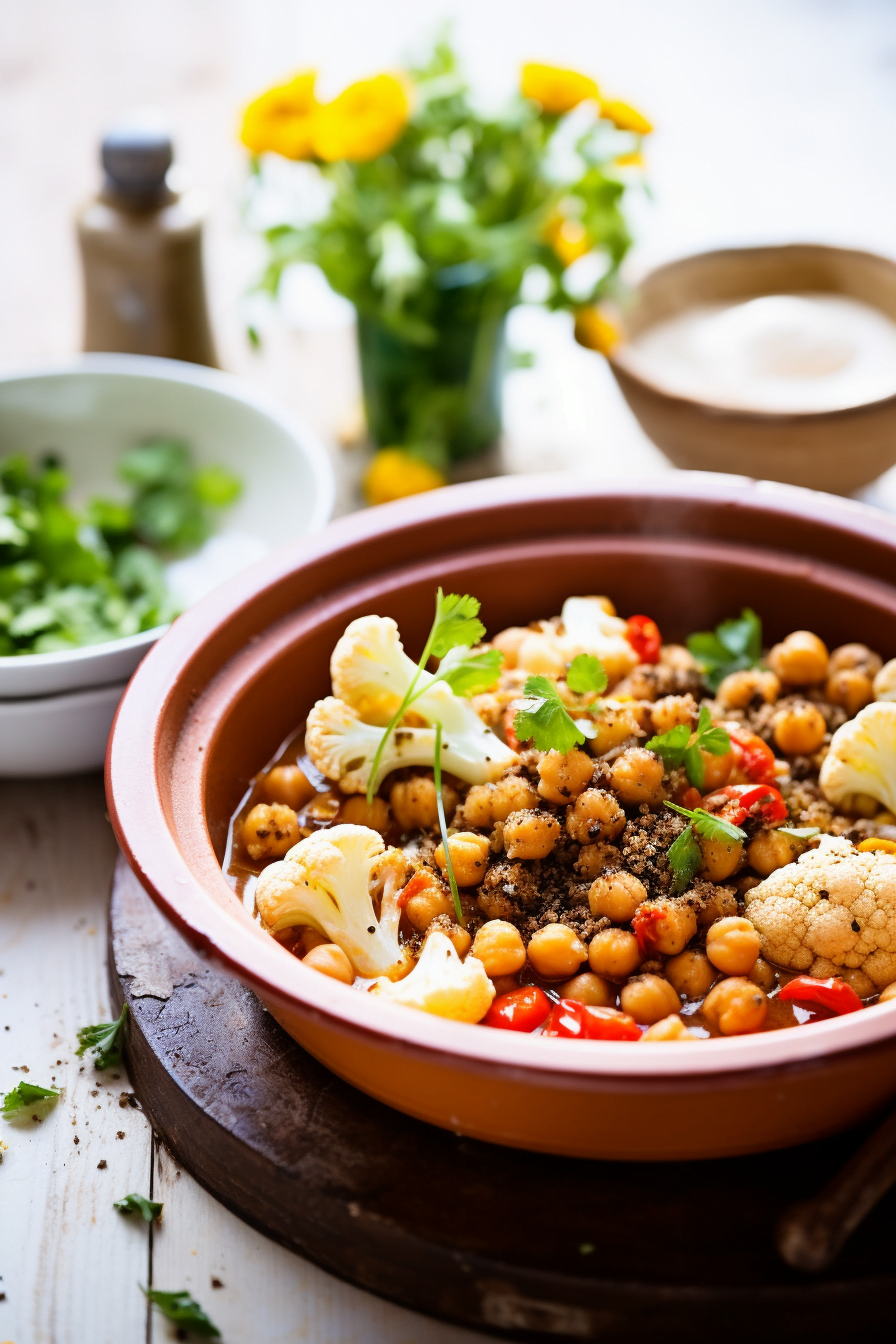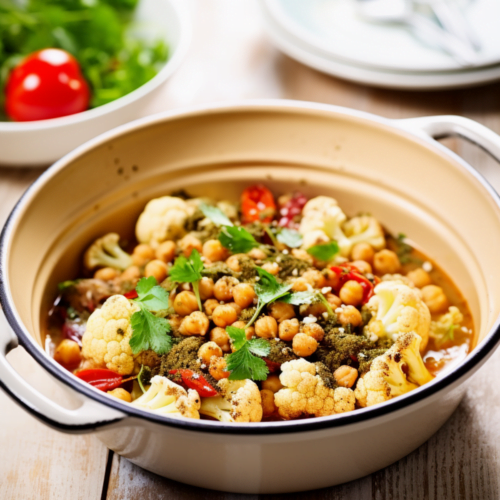Discover the Heart of Sicilian Comfort: Cauliflower and Chickpea Stew with Capers
Imagine the rustic landscapes of Sicily, the aroma of spices wafting through the air, and the warmth of a hearty stew simmering on the stove. That’s the essence of our Sicilian Cauliflower and Chickpea Stew with Capers, a dish that encapsulates the soul of Mediterranean cooking. This recipe is not just a meal; it’s a journey to the heart of Sicilian culinary tradition, offering a symphony of flavors that are robust, aromatic, and utterly comforting.
Whether you’re seeking a nutritious dinner option or a taste of the Mediterranean without leaving your kitchen, this stew is designed to satisfy. It’s a vegan delight, brimming with the goodness of cauliflower, the protein-rich chickpeas, and the tangy surprise of capers. Let’s embark on this culinary adventure together and bring the authentic flavors of Sicily to your table.

The Roots of Sicilian Cauliflower and Chickpea Stew with Capers
Sicily’s gastronomic landscape is a tapestry woven with the threads of its varied historical influences. The island’s position as a crossroads of the Mediterranean has blessed it with a rich culinary heritage, and our Sicilian Cauliflower and Chickpea Stew with Capers is a testament to this legacy. This dish, while not bearing a traditional ‘named’ recipe, is inspired by the classic ‘caponata,’ a Sicilian staple that typically features eggplant.
The stew is a celebration of local produce and the Sicilian penchant for dishes that are both simple and profound. Cauliflower, a cruciferous vegetable, thrives in the island’s fertile volcanic soil, while chickpeas have been a staple in Sicilian kitchens since ancient times. Capers, the tiny, piquant buds harvested from wild caper bushes that dot the Sicilian landscape, add a burst of flavor that is unmistakably Mediterranean.
Each ingredient in this stew tells a story of the island’s agrarian past, its cultural exchanges, and the ingenuity of its people in creating dishes that are hearty, healthy, and flavorful. The use of aromatic spices like oregano and cumin reflects the Arab influence on Sicilian cuisine, while the simplicity of the preparation honors the island’s rustic cooking traditions. This stew is a humble yet proud representation of Sicily’s culinary spirit.

Mastering the Method
Crafting the perfect Sicilian Cauliflower and Chickpea Stew with Capers requires more than just following a recipe; it’s about embracing the spirit of Sicilian cooking. Here are some chef’s insights to elevate your stew:
1. Sautéing the Aromatics: The foundation of any great stew is the flavor base. Begin by gently cooking the onions until they’re just translucent – this is crucial for developing sweetness. Adding the garlic at the right moment is key; too early and it risks burning, too late and it won’t release its full potential. Let the garlic and onions meld together before introducing the spices.
2. Toasting the Spices: Sicilian cuisine is known for its bold flavors, and toasting the spices is a traditional technique that unlocks their aromatic oils. A brief toasting of oregano, red pepper flakes, and cumin will envelop your kitchen in a warm, inviting scent and infuse the stew with depth.
3. Simmering to Perfection: Patience is a virtue in Sicilian cooking. Allow the stew to simmer gently; this slow cooking process is what tenderizes the cauliflower and harmonizes the flavors. The capers should be added towards the end to preserve their briny essence, which is a signature of the island’s cuisine.

Variations to the Sicilian Stew
Roasted Cauliflower Version
For a richer, more caramelized flavor profile, try roasting the cauliflower before adding it to the stew. This variation introduces a delightful textural contrast and a depth of flavor that enhances the overall dish.
Seafood Twist
While our recipe is plant-based, Sicily’s coastal location means seafood is a staple. Incorporate some fresh prawns or chunks of white fish to add a layer of briny complexity that complements the capers beautifully.
Spicy Sicilian Heat
If you’re a fan of heat, don’t hesitate to kick it up a notch. Sicilians love a touch of spice, so adding extra red pepper flakes or even a diced fresh chili can bring a fiery dimension to this comforting stew.
Substitutions for Your Sicilian Stew
Flexibility is at the heart of Sicilian home cooking, and this stew is no exception. Here are some substitutions to accommodate dietary needs or preferences:
Gluten-Free Adjustments: To ensure this dish is gluten-free, select a vegetable broth and canned tomatoes that are certified gluten-free. This simple switch doesn’t compromise the flavor or authenticity of the recipe.
Low-Fat Alternative: For a lower-fat version, reduce the amount of olive oil used for sautéing or opt for a light spray of oil. This modification maintains the heartiness of the stew while catering to those watching their fat intake.
Herb Variations: If oregano isn’t to your taste, try basil or thyme as a substitute. Each herb will bring its unique character to the stew, reflecting the diverse herb gardens found across Sicily.
Frequently Asked Questions
| Question | Answer |
|---|---|
| Can I make this stew ahead of time? | Yes, this stew tastes even better the next day as the flavors have more time to meld. Store it in an airtight container in the refrigerator. |
| Is this stew suitable for freezing? | Absolutely, this stew freezes well. Just be sure to cool it completely before transferring it to freezer-safe containers. |
| How can I make this stew more filling? | Consider adding brown rice or quinoa to the stew for extra heartiness and a boost of whole grains. |
| Can I use fresh tomatoes instead of canned? | Yes, fresh ripe tomatoes can be used. You may need to adjust the cooking time and add a bit more broth to compensate for the lack of juices. |
| What can I serve with this stew? | It pairs wonderfully with crusty bread or a simple green salad for a complete meal. |

Sicilian Cauliflower and Chickpea Stew with Capers
Equipment
- Large pot
- Cutting board
- Chef's knife
- Wooden spoon
Ingredients
- 1 large head cauliflower, cut into florets (about 2 pounds / 900g)
- 1 can chickpeas (15 ounces / 425g), drained and rinsed
- 1 large onion, diced (about 8 ounces / 225g)
- 3 cloves garlic, minced
- 1 can diced tomatoes (14.5 ounces / 410g)
- 3 tablespoons capers, drained
- 1 teaspoon dried oregano
- 1/2 teaspoon red pepper flakes
- 1/2 teaspoon ground cumin
- 1/4 cup olive oil (60ml)
- 2 cups vegetable broth (480ml)
- Salt and pepper, to taste
- Fresh parsley for garnish, chopped
Instructions
- Prepare the Cauliflower: Begin by washing the cauliflower head and cutting it into bite-sized florets. Set aside.
- Sauté the Aromatics: In a large pot, heat the olive oil over medium heat. Add the diced onion and cook until it becomes translucent, about 5 minutes. Stir in the minced garlic and cook for an additional minute until fragrant.
- Add Spices: Sprinkle the oregano, red pepper flakes, and ground cumin over the onion and garlic mixture. Stir to combine and allow the spices to toast lightly for about 30 seconds.
- Combine the Stew: To the pot, add the cauliflower florets, chickpeas, and diced tomatoes with their juices. Stir to incorporate all the ingredients.
- Add Liquid: Pour in the vegetable broth and bring the stew to a simmer. Let it cook, covered, for about 30 minutes, or until the cauliflower is tender.
- Incorporate Capers: Once the cauliflower is cooked to your liking, add the capers to the stew and season with salt and pepper to taste. Simmer for an additional 5 minutes to allow the flavors to meld.
- Garnish and Serve: Remove the stew from heat. Serve hot, garnished with fresh chopped parsley.
Notes

